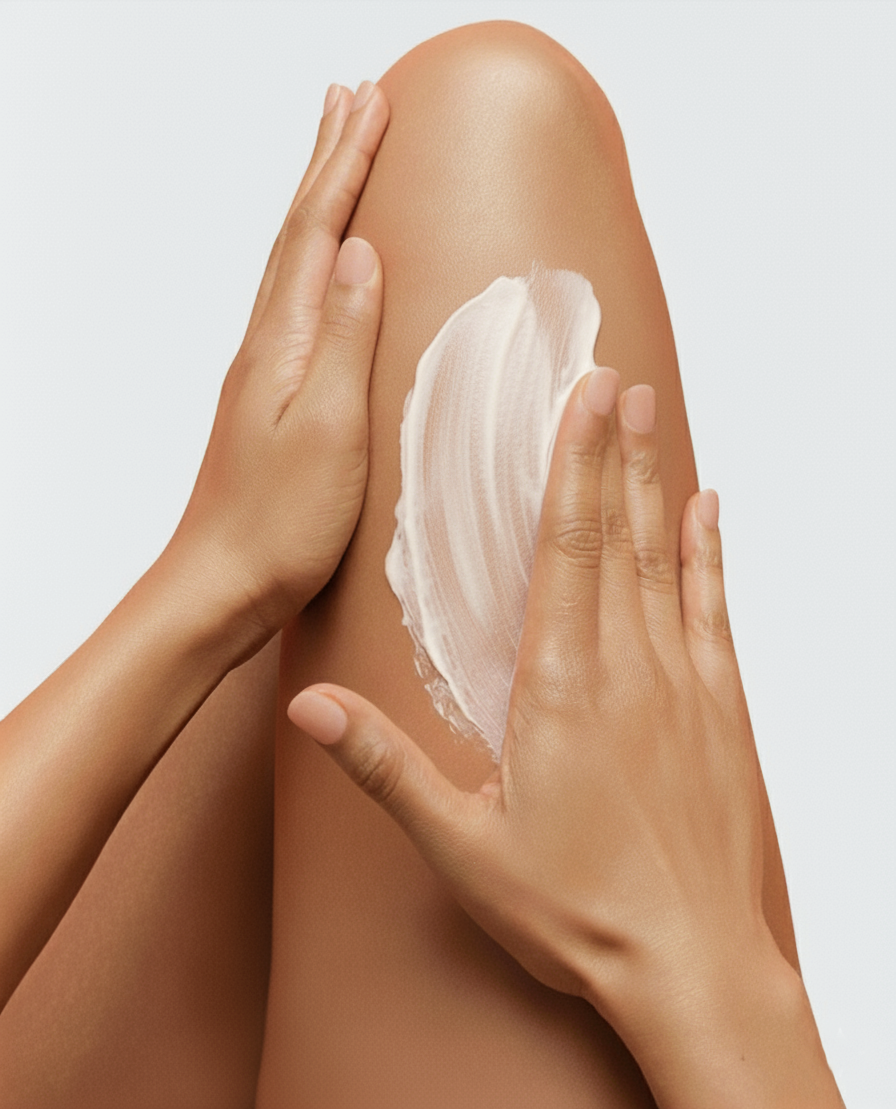What Is Really In Most Self Tanning Products?

Everyone loves having sunkissed, summer skin. But interest in and passion for skincare is stronger than it has ever been, and the constant sun exposure needed to achieve that color has becomes far less appealing. This guides many of us in the direction of sunless tanning products as a safer alternative, however, most consumers don’t seem to be questioning and scrutinizing their ingredients in the same way they do for their routine face and body products.
A deep dive into the most popular self tanning brands will show you that while many are claiming to be “skin friendly”, “clean” and “free of toxins”, almost all products on the market still contain several ingredients that negatively affect the skin’s overall health and appearance.
So what are these specific ingredients that you should be looking out for?
Drying Alcohols
(INCI Examples: Alcohol Denat., SD Alcohol, Isopropyl Alcohol)
**Note that it is important to differentiate drying alcohols from fatty alcohols (Cetyl, Stearyl & Cetearyl), which are incredibly beneficial for skin.
Fragrance
(INCI Examples: Fragrance, Parfum)
Essential Oils
(INCI Examples: Limonene, Citronel, Citral, Farnesol, Geraniol, Limonene, Linalool)
Synethic Color
(INCI Examples: (CI 19140), Red 40 (CI 16035), Red 33 (CI 17200), Blue 1 (CI 42090))
Silicones
(INCI Examples: any ingredient ending in -cone or -siloxane)
PEG's (Polyethylene Glycols)
(INCI Examples: PEG 100)
Parabens
(INCI Examples: anything on an ingredient label that ends in -paraben)
These ingredients are found in almost every sunless tanner, yet do not play any significant role in the quality or efficacy of the product. Let’s break them down a little.
Drying alcohols are commonly used because they give products a quick drying, weightless finish and immediately degrease skin upon application. However, long term use of products with denatured alcohol has been proven to dehydrate, weaken and trigger cell death in the skin. These negative effects increase when combined with other irritants, like (fragrance, essential oils, etc).
It is no secret that DHA, the ingredient responsible for the actual color payoff, can produce an unpleasant scent as it reacts with your skin. Many brands will turn to fragrance in an attempt to mask this odor. However, both natural and synthetic fragrance in skincare products have been proven to be one of the most common causes of skin allergies and inflammation. A “fragrance” compound is typically composed of hundreds of individual chemical components, and brands are not required by federal law to disclose what these components are. The commonly used natural alternatives that brands claim are clean are essential oils. However, the fragrant compound in most plants also has extremely sensitizing effects on the skin. Even if your skin does not show signs of being aggravated, the damage may be occurring underneath the surface.
Synthetic colors are similar to fragrance in that you can find dozens of chemicals in a single color, making it extremely difficult to know what you are exposing your skin to. The toxins that these artificial colors leave on your skin can also increase your risk of sensitivity and irritation. Contrary to popular belief, the synthetic dyes in self tanning products have zero effect on the resulting color and are only used in formulas as a guide to show you where you have applied the product.
The use of silicones in skincare products (often identified by ingredients ending in “-cone” or “-siloxane”) is a controversial topic. Research suggests that silicones can effectively lock in moisture and enhance the absorption of other ingredients into the skin. However, they can also be challenging to remove. If you’re not thorough with your cleansing routine or prefer not to cleanse daily, silicones may form a barrier that traps impurities like oil, dirt, and dead skin cells. This can lead to congestion, breakouts, and other skin issues. Therefore, those with sensitive or acne-prone skin might want to moderate or limit their exposure to silicones.
Polyethylene glycols (PEGs) are widely used in skincare products as emulsifiers, solvents, and moisture-retaining agents due to their ability to blend ingredients and maintain product stability. They are formed by polymerizing ethylene oxide, resulting in chains of ethylene glycol units that vary in molecular weight, affecting their properties and uses.The safety of PEGs has been a topic of concern, primarily due to potential contamination from harmful by-products such as ethylene oxide and 1,4-dioxane during the manufacturing process. Reputable cosmetic ingredient suppliers can monitor these impurities and actively remove them from the finished ingredient, however, there is evidence suggesting that PEGs can cause skin sensitivity, particularly with prolonged use. Because we want our products to work for all skin types, we opt for using safer, alternative (and less controversial) emulsifiers and solvents, as PEGs are not essential for our formulas to be effective.
Parabens are preservatives widely used in skincare and cosmetic products to prevent the growth of harmful bacteria and mold. However, they have become controversial due to concerns and studies suggesting they may disrupt hormones and the endocrine system. It is important to remind consumers that effective bacterial control is still essential in product development. So as we await further research on parabens, we currently use Phenoxyethanol, a glycol ether preservative that does not mimic hormones in the way parabens do - and Ethylhexylglycerin, a glyceryl ether that enhances the antimicrobial efficacy of other preservatives while also acting as a skin-conditioning agent.
Tanning can be, and absolutely should be, a skin-friendly experience, which is why we as a brand will forever avoid all scientifically proven and controversial toxins, sensitizers and irritants when we develop our formulas. We instead choose a hydrating, skin friendly blend of vitamin rich ingredients and the highest quality natural tanning actives because we have found that nourishing the skin results in the most natural, even and longer lasting color.

